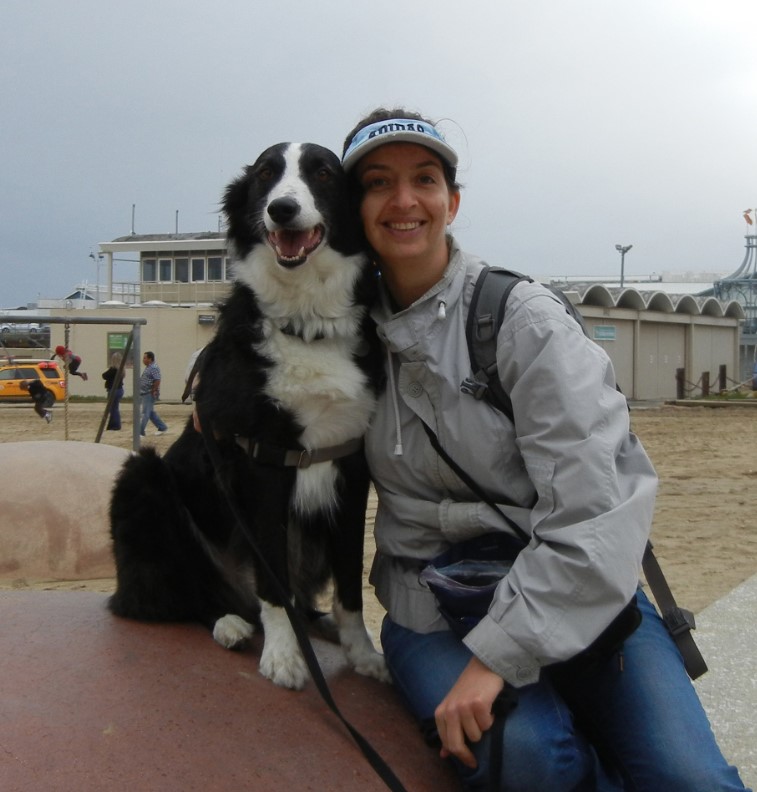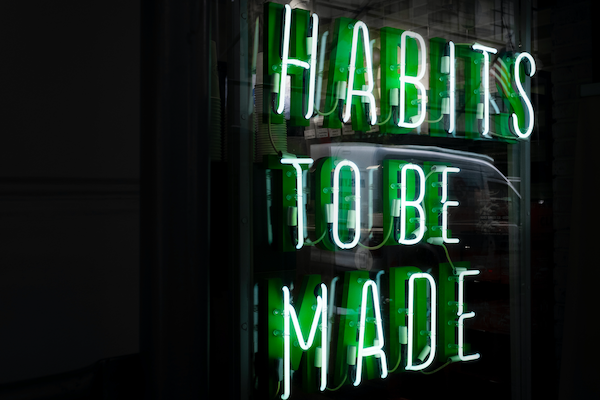Hi everyone! I'm Irith Bloom, and this is a quick reminder that you are in the harnessing the powers of Choice and Habit course.
The topic of this lecture is goal-directed vs. habitual behavior.
NOTE: Want to watch a video of this lecture instead of reading it? Click on the video above!
Goal-Directed Behavior
Let's begin by looking at goal-directed behavior.
Goal-directed behavior is something that most of you have probably already learned about.
You've probably learned the concept that in behavior there is an antecedent or antecedents that come before the behavior, then the behavior happens, and then there are consequences.
Depending on what the consequences of the behavior are, the behavior is either reinforced or punished. Reinforced means the behavior is more likely to happen again. Punished means the behavior is less likely to happen again.
So essentially in goal directed behavior, it's almost as if the animal is doing a little mathematical calculation, as follows (though of course we can't see in the animal's brain, and I doubt they think in words):
"In this circumstance, if I do this behavior, good stuff likely to happen or is bad stuff likely to happen."
Based on what the animal knows, they decide whether or not to do that behavior.
Consequences Drive Behavior
Another way to express the model of goal-directed behavior is to say that consequences drive behavior.
NOTE: This is a phrase that I first heard from the amazing Kathy Sdao, who is a trainer and presenter in Washington state. You should definitely go check her out if you're not familiar with her work.
What consequences drive behavior means is that the behavior of, for example, racing your car happens not because the starting gun went off, but because that race car driver wants to win the prize that comes at the end of the race for finishing first.
So the motivation for the behavior isn't, "Ooh, I heard the starting gun. I should go," (although there are elements of that that I'll get into in just a moment). The motivation for the behavior is, "Ooh, I heard the starting gun. That means if I go fast now there's a stronger possibility that I will win the prize and I really want to win the prize."
So it's about winning the prize.
That starting gun is important because it tells the driver when to start. It's the signal, the cue that tells the race car driver when to hit the gas. But what motivates the race car driver isn't the cue. It's that consequence of winning the prize at the end when they finish first.
That is an example of goal-directed behavior.
Habitual Behavior
Now, let's take a moment and talk about habitual behavior.
Habitual behavior does not rely on consequences. It is actually driven by the context, the scenario, the antecedents.
A classic example of this in human beings is that there's a bowl of popcorn in front of you. You're in the movie theater and you suddenly realize that you have mindlessly eaten half of that humongous container of popcorn that you bought when you walked into the theater (because there's no longer such a thing as a small container of popcorn), and you don't even remember necessarily eating all that popcorn, and you certainly weren't thinking, "Hmm, shall I eat some popcorn? Yes, I like the flavor of popcorn, so I am motivated to eat the popcorn because it tastes good." Maybe you thought that for one or two pieces of popcorn, but at some point it just started happening almost automatically. It's not literally automatic, but it's also not particularly thoughtful, and that is habitual behavior.
In a nutshell, we're not doing the behavior for the consequence. In fact, often the consequence has lost its value. The consequence might even be punishing in the case of things like addictions.
Nevertheless, we continue to do the behavior because what's happened is habitual behavior has been tied to those antecedents, to that context.
In goal-directed behavior, things are different than in habitual behavior. Let's use the popcorn example.
Goal-Directed Popcorn Behavior: See bowl of popcorn, think "Hmm, popcorn is tasty," have a piece of popcorn, enjoy the flavor of the popcorn.
Habitual Popcorn Behavior: See bowl of popcorn, pick up a piece of popcorn before you even think about it, and maybe you don't even taste it as you eat it.
Hopefully this is starting to make sense to all of you.
Another way to look at it is the following:
Goal directed behavior is all about the connection between the behavior and the consequence.
The consequence is why the behavior is happening. For example, the animal knows they're going to earn a treat, so they do the behavior in order to earn that treat.
Habitual behavior is about the connection between the antecedent and the behavior.
That's the strong tie. That's what's driving the behavior - the context, not the reward.
How and why is this happening?
Before I put together this lecture, I looked yet again into the neuroscience of habitual and goal-directed behavior. Here's what I can tell you: we're not entirely clear on how it all works. Scientists disagree to some extent about exactly which brain structures are involved in doing what, and in fact, some brain structures that have traditionally been thought to relate to habitual behavior now appear to play a role in goal directed behavior and vice versa.
What we do know is that something different is happening in the brain during habitual behavior versus goal-directed behavior, and there's a lot of research that points at certain areas of the brain. I'm not going to go into the neuroscience because it is fairly unsettled, but there's a lot of research that points to certain areas of the brain and suggests that they're involved.
Nevertheless, we don't yet really know entirely what's going on except to know that something is happening.
We're All Doing Our Best
What it comes down to is that animals are generally doing their best some of the time.
Sometimes they are able to be in goal directed mode and hopefully their goals match your goals and their behavior is in line with what you'd like to see.
Other times, their brain has slipped them into a habitual behavior mode and they have a much harder time making the kind of decisions that you would like to see them make.
Nevertheless, I believe (and I hope that you will agree with me), that animals are generally doing their best, given the information they have, the surroundings they are in, and how their brain is functioning in that moment.
Next Time...
Next time, we're going to talk a little bit about what flips the switch between goal-directed and habitual behavior.
Key Takeaways
Here are some key takeaways to keep in mind from this lecture.
- First of all, behavior can be goal directed or habitual.
- Remember that goal directed behavior is that consequence driven behavior and habitual behavior is the context driven behavior.
- The mechanisms of all of this are still under investigation. We don't really know quite yet what's going on, but we have a feeling that there's probably activity in different parts of the brain and there may be different neurotransmitters involved, but the picture isn't clear yet.
- The important thing to bear in mind is that animals, and that includes us humans, when we're faced with a bowl of popcorn, are doing our best.
Next Steps
Gold and Silver Students
- Start thinking about the behaviors you are seeing in your dog.
- Which behaviors seem to be goal-directed?
- Which behaviors seem to be habitual?
- How can you tell? What are the clues that are helping you determine which is which?
- Feel free to post questions.
- Also, post about the goals that you would like to achieve.
Bronze Students
- Follow along.
- Try this at home!
Thank you so much. See you next time!
 Instructor: Irith Bloom
Instructor: Irith Bloom


